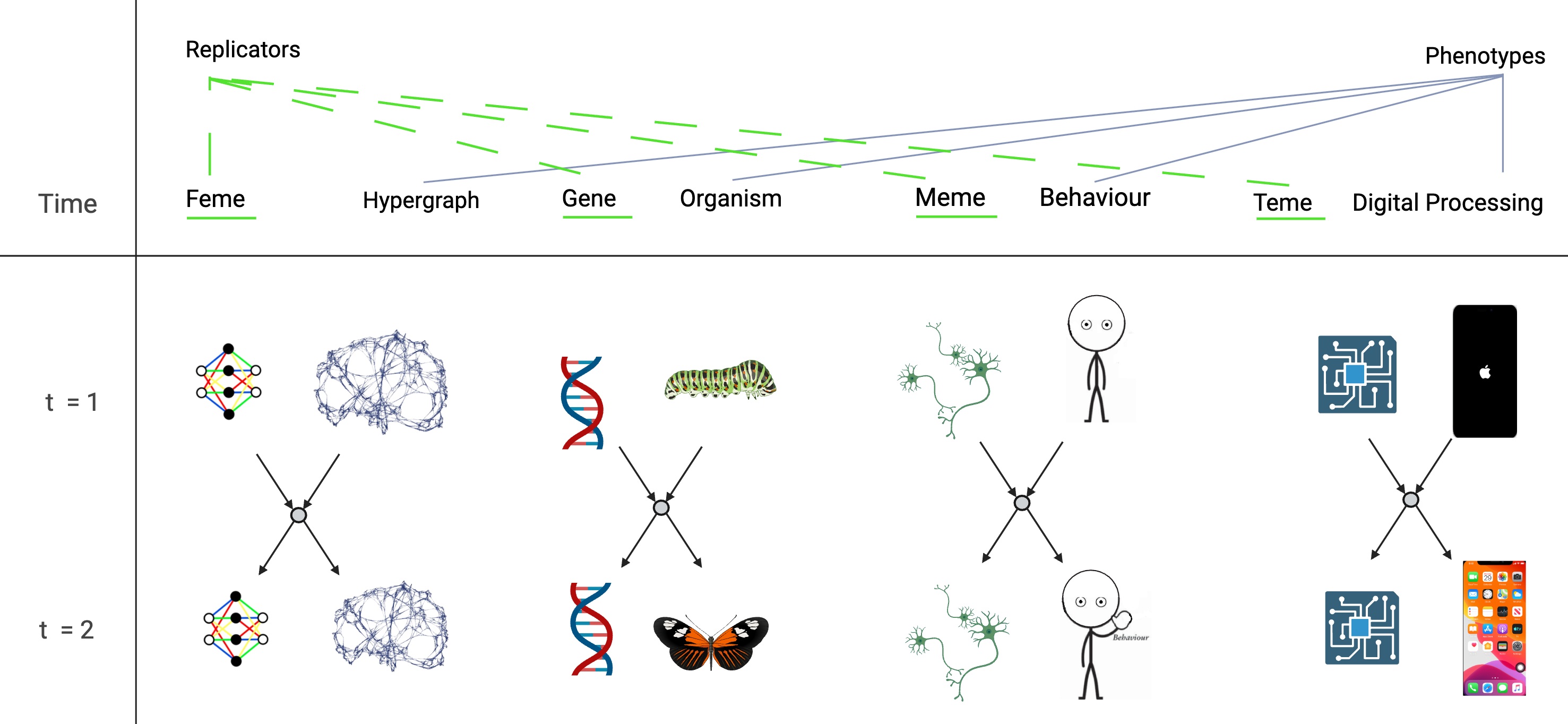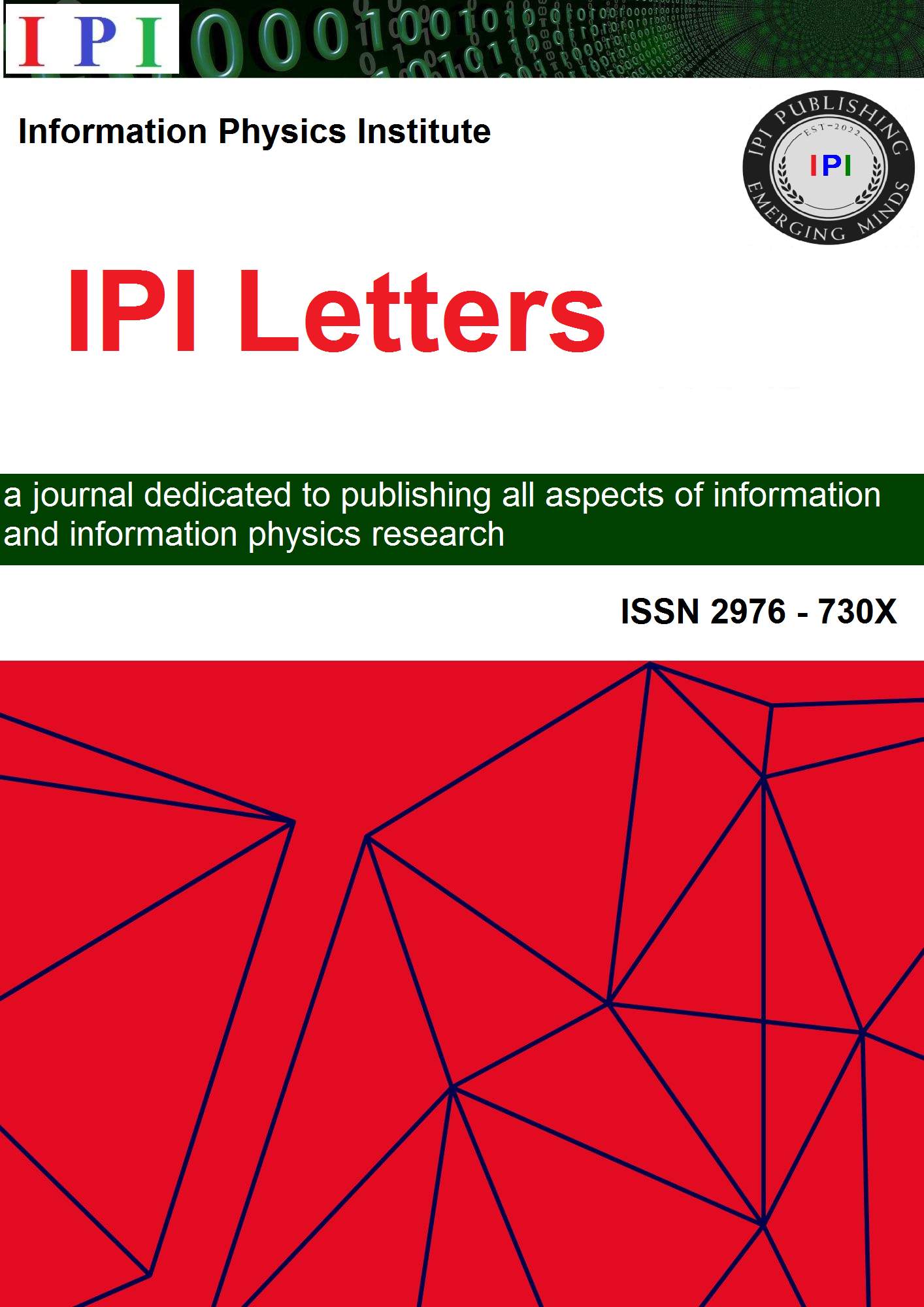Femes: An Evolutionary Physics Solution to the Constructor Gap and Fine-Tuning
DOI:
https://doi.org/10.59973/ipil.204Keywords:
Constructor theory, Creation of computational universe, information physics, Fundamental ReplicatorsAbstract
Computational models of physics suggest reality operates via a fundamental update rule, yet they lack an explicit physical mechanism for its instantiation. Constructor theory mandates that any reliable transformation requires a physical constructor. This paper resolves this gap by proposing the ’feme’ – a fundamental replicating information structure – as the necessary constructor. We frame the fundamental update rules, such as those described in Wolfram Physics or supersymmetry, as the transformations caused by the interaction of the feme with reality. We argue that femes, like genes, memes, and temes, are replicators that embody knowledge for creating both a phenotype and a copy of itself. Their evolution by natural selection
provides a causal mechanism for the stability and fine-tuning of physical laws, predicting observable signatures including a self-replication program, embedded error-correcting codes, and the fallibility of physical laws.
References
Stephen Wolfram. A Project to Find the Fundamental Theory of Physics. Wolfram Media, 2020.
Jonathan Gorard. Some relativistic and gravitational properties of the wolfram model. arXiv preprint arXiv:2004.14810, 2020.
Jonathan Gorard. Some quantum mechanical properties of the wolfram model. Complex Systems, 29(2):537–598, 2020.
David Deutsch. Constructor theory. Synthese, 190(18):4331–4359, 2013.
Chiara Marletto. The science of can and can’t: A physicist’s journey through the land of counterfactuals. Viking, 2021.
Thomas Bradley. Conjecture: The Theory of Everything is Embodied by Fundamental Replicators (Femes). viXra, May 2024.
viXra:2405.0166.
John Von Neumann and Arthur W Burks. Theory of self-reproducing automata. IEEE Transactions on Neural Networks,
(1):3–14, 1966.
David Deutsch. The Beginning of Infinity: Explanations That Transform the World. Penguin UK, 2011.
Melvin M. Vopson. The second law of infodynamics and its implications for the simulated universe hypothesis. AIP Advances, 13(10):105308, 2023.
Richard Dawkins. The selfish gene. Oxford University Press, 2016.
Susan Blackmore and Susan J Blackmore. The meme machine, volume 25. Oxford paperbacks, 2000.
Leonard Susskind. The Cosmic Landscape: String Theory and the Illusion of Intelligent Design. Little, Brown and Company,
New York, 2006.
Georg Cantor. Ueber eine elementare frage der mannigfaltigkeitslehre. Jahresbericht der Deutschen Mathematiker-Vereinigung, 1:75–78, 1891.
Kurt G¨odel. ¨Uber formal unentscheidbare s¨atze der principia mathematica und verwandter systeme i. Monatshefte f¨ur
mathematik und physik, 38(1):173–198, 1931.
Alan M Turing. On computable numbers, with an application to the entscheidungsproblem. Proceedings of the London
mathematical society, 2(1):230–265, 1936.
Richard W Hamming. Error detecting and error correcting codes. The Bell system technical journal, 29(2):147–160, 1950.
Charles F Doran, Michael G Faux, S James Jr Gates, T Hubsch, Kevin M Iga, and Gregory D Landweber. Relating doubly-even
error-correcting codes, graphs, and irreducible representations of n-extended supersymmetry. arXiv preprint arXiv:0806.0051,

Downloads
Published
How to Cite
Issue
Section
License
Copyright (c) 2025 Thomas Bradley

This work is licensed under a Creative Commons Attribution 4.0 International License.














